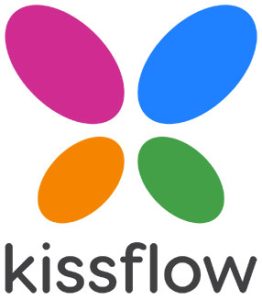
As the world shifts towards digitization and technical advancements accelerate, companies are adopting tools that make manual work easier. They are changing the way they record and store data by automating entire processes. Thanks to automation, many businesses have met rising demand, increased productivity, and implemented new business models.
Without a doubt, adopting automation is an important decision for organizations everywhere. But not all organizations make informed decisions. Some rush into automation, while others overthink and don’t implement it at all. When planned and executed well, automation has the potential to fuel process efficiencies and free employees from mundane, time-consuming tasks.
Automation isn’t just about quick wins and short-term gains. It has many long-term benefits and should be a result of careful consideration of all business aspects–employees, productivity, impact on business and company culture, value, cost, and goals.
Why Choose Automation
1. Reduced Costs
Every company is under pressure to lower costs and increase profitability. And according to research, automation has the potential to decrease costs by up to 75%.
Process automation software takes a more intelligent approach to cost containment and reduction. It enhances service to the customer while systematically reducing costs. But management often overlooks this huge potential for savings.
2. Increased Productivity
With automation, employees are no longer forced to spend precious time on tedious, repetitive work. It boosts productivity because fewer processes and routine tasks hold them back; they can get more done.
When cumbersome manual processes are automated, multiple tasks are managed simultaneously. Records retrieval that used to take weeks when done manually happens quickly and in tandem with other tasks. Automating complex and time-consuming tasks means work is completed quickly, with fewer mistakes.
3. No Human Error
When employees perform the same tasks repeatedly, they can easily make mistakes. It’s normal for people to make errors, but they can be incredibly harmful to businesses. Up to 80% of accidents are a direct result of human error.
Regardless of the industry, errors are often costly and time-consuming to correct. When business processes are automated, human errors are eliminated. An older study found that human error costs businesses more than 37 billion dollars in lost productivity. When there are no errors, a company saves time, resources and eliminates rework.
Automation Pitfalls Faced By Organizations
1. Incorrect Process Automation
Many organizations invest in automation because it’s expected of them or the industry’s norm. This is not wrong and can give a company a competitive advantage. But it’s important first to understand why automation is needed and what to automate to avoid automating the wrong processes.
Make sure you’re targeting processes that will give you real value right off the bat, don’t just automate everything you can. The best processes to automate are repeatable and deterministic. Automation breaks down complex processes into workflows, making them easier to complete and manage. But it cannot do everything. If a task needs a human touch, a human should handle it. If it’s robotic, automate it. Trying to automate everything can be costly and add many unnecessary complications.
2. Choosing the Wrong Tool
Automation won’t work effectively if the right tool isn’t used. But with so many solutions on the market, it’s easy to get confused. Many managers end up choosing one tool for their entire organization. That’s a huge mistake because one tool can’t solve all business problems. The key is finding out what problem you want to solve.
Implementing workflow automation software demands a lot of time and effort from everyone across the organization. However, If the benefits of the solution exceed the price you’ve paid for it, you’ll have positive outcomes.
Before getting an automation tool, company decision-makers should define the specific problems they need to solve. They should also try the tool before buying. Run the automation tool for 2 weeks to see how it works in your environment and to make sure it addresses your problems.
Regardless of your industry, you can benefit greatly by enhancing workflow processes using automation as it reduces cost, approval cycle times, and even generate positive ROI in a few months.
3. Automating and Forgetting
Process automation software usually runs in the background, so it’s easy to forget that you have an active program running some of your processes. But setting up and forgetting your automation software can lead to expensive losses, as Knight Capital Group, the former Wall Street Giant, learned.
In 2012, an automated high-frequency trading platform used by the company bought 150 different stocks in only one hour of trading, costing the company $7 billion! The firm went out of business and was bought by a rival firm a year later.
Process automation software may run forever unless it breaks down or you tell it to stop. But business processes change due to new technology, laws, or customer behavior. If you set and forget your automation software, outdated processes will continue to be automated, wasting time and resources or causing legal violations. Tweak, test, and continually fine-tune automated processes.
How to Make Better Automation Decisions
1. Create a Decision Framework
65% of organizations have yet to start their automation journey or are still piloting a single process. And while many companies have embraced automation, some have efficiency as their only goal. Automation can offer a lot more. When you create a decision framework, you know what to automate and when.
Ask yourself the following questions:
- Why are we automating business processes?
- How much will it cost?
- What’s the business impact and value?
- How complex are the processes, and how will they change?
- What changes need to be made to make this work?
After coming up with the answers to these questions, you can map them to a simple chart.
2. Onboard Employees Well
Only 12% of employees think their company is good at onboarding. Many new employees have to wait around for managers to grant them access to key systems. Automation platforms have made onboarding easier, and companies can create a fully automated onboarding process. When employees are inducted well, they settle in quickly and embrace the automation culture. Well-trained employees serve customers better.
3. Focus on the Customer
As you automate processes, customers shouldn’t suffer. Customer retention is of high value, so make your customers your priority. Customer service reps should be able to refresh and check data at any time. Continue delivering quality products and customer service. Every customer experience should be the same–amazing.
Start Making Better Automation Decisions
73% of business leaders say that automation has saved their employees 10-50% of the time they previously spent doing manual tasks. Automation works, but only if the right decisions are made.
Kissflow Workflow is a comprehensive workflow platform that empowers organizations to rapidly design, streamline, and deploy processes from end to end. With such a tool you can reduce operational chaos, eliminate process bottlenecks, and drive efficiency and productivity. All of this is within an intuitively designed UI that requires no coding experience and external expertise to set up and deploy. In short, Kissflow puts the ‘flow’ in the workflow. Sign up today!


























